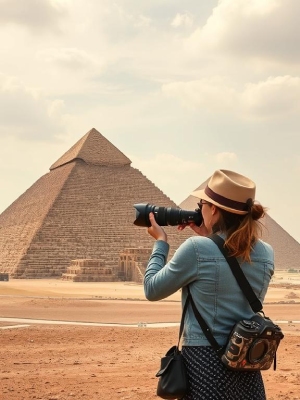
Photojournalism is an odd form of storytelling combining the art of photography with the strong language of the news. The dynamic power of the sharing element is enhanced when travel is added; it attempts to describe places, cultures, and human experiences. A photojournalistic approach converts any view of travel into real visual stories that communicate the soul of a place, the people within it, and their everyday life. This page delves substantially into the means photojournalism shapes our ideas concerning travel, revealing the supposed charms linking us to cultures and moments in times.
Visual Storytelling in Travels
Travel photography can accomplish more than documenting pretty scenes. As it joins forces with photojournalism, it becomes a mode of telling compelling and deep stories. A photojournalist, in terms of documenting reality, captures not just the picturesque landscape but the real-life human experiences, the calm moments, the busy streets, the celebrations, and the other side of life on the road.
Photojournalism in travel photography is gorgeous for being real. While traditional travel photography is too often about pretty pictures of spots, photojournalism attempts to show a real story-and one that involves emotion, conflict, and triumph that is unique from one place to another. Photojournalists through their cameras take the audience to a strange land, showing the local culture in way that words could never.
How Photojournalism Relates to Travel Writing
Travel photojournalism enriches travel writing by applying visual representation and documentation of the article. While travel writers may describe their experiences with lengthy details, the photojournalist's work can breathe life into those words, thus providing a more immersive experience for the audience. Travelers don't read about the sunset at the Grand Canyon; they see it, feel it, and grasp the importance of the moment.
The plane of the country can be brought in by photojournalism to contrast those cities endowed with an energetically aggressive urban existence, such as New York or Los Angeles. Hence photography must go beyond the tourist sites and understand the people, customs, and landscapes that make the country so diverse.
Impactful Themes in Travel Photojournalism
- Culture and Traditions: Documenting how various cultures around the world apply their ways to celebrate their legacy speaks much about their lives. From religious ceremonies to family gatherings, the lens captures the euphoric state, solemn rites, and sometimes, the contrasting nature of such customs.
- Social and Environmental Issues: Photojournalists emerge as the first witnesses of any human struggle, alterations in paradigms of environment, and societal changes. In the area of travel, images are not just about places afar; they emphasize the need to set poverty, climate change, and human rights as issues demanding attention.
- Adventurous Journeys: Travel photojournalism is often on the trail of adventurers, explorers, and wanderers as they traverse new lands. These images chart and tell their stories, recording the moments of both success and struggle that form the heart of an adventure.
Tips for Aspiring Travel Photojournalists
If your dream is to step into travel photojournalism, here are some pointers to guide you along the way:
Know Your Subject Matter
Getting out with your gear is best after some background research. Whether you'll be shooting a local tradition, street life, or maybe a story about a particular community, you want to be sure about the context. This will allow you to treat the subject with sensitivity, respect, and authenticity.
Be Patient and Observant
These moments sometimes never announce themselves immediately. The finest photojournalist is aware of when to wait, sit back, and watch things as they come to pass. So jot this down: force-fitting a fleeting moment or waiting for that perfect light calls for loads of patience. Observe the people and the rhythm of everyday life around you; be ready to grab the moment.
Telling a Story in One Frame
In travel photojournalism, every picture must tell a story. Getting a nice image is not sufficient; the situation must be the image in itself or in conjunction with other images. Think about the emotions, context, and message you want to communicate before pressing the shutter.
Famous Photojournalists and Their Travel Stories
Some of the world’s most iconic photojournalists have traveled to the remotest corners of the world to document social issues, history, and human resilience. Their works set an example for travelers and photographers.
- Steve McCurry: Famous for his one-time "Afghan girl" portrait, McCurry has been tending to a global human condition through some of the most powerful images.
- Sebastião Salgado: His “Workers” and “Genesis” series are about humanity’s interaction with nature, framing work and the degradation of the environment through awe-inspiring photographs.
- Robert Capa: Considered by many the greatest war photographer, travelling allowed him to reach some of the most dangerous corners of the world, where he recorded the course of events and those who suffered from them.
The Art of Traveling with a Purpose
Photojournalism and travel meet where curiosity wursts with purpose. From rendering joy clenched in a local festival to the anguish in a refugee journey, photojournalists have an ability to tell a story that disturbs our conception of the world. Through them, the world can neither be looked at just for the beauty of things, nor for anyone who truly has an idea of his grandeur.
As one travels through his or her lens inspired by photojournalists, remember, the goal is to construct a unique story-well told and truthfully. Focusing on that kind of authenticity and context will allow creation of images, which have been embedded on your mind, which truly represent the elements of place, people, and culture.
